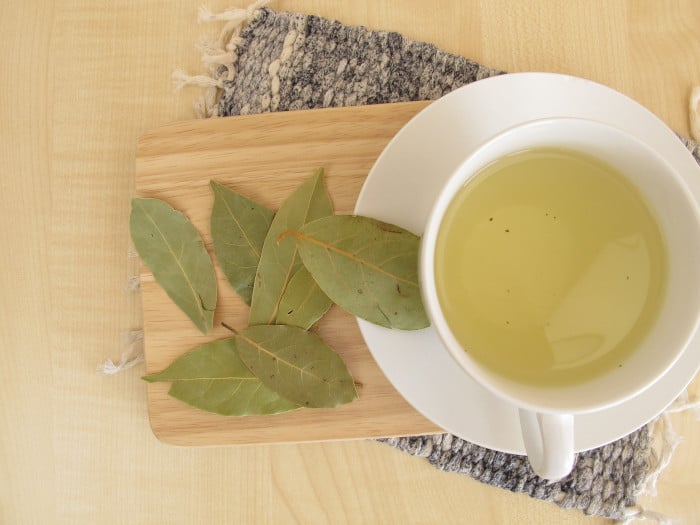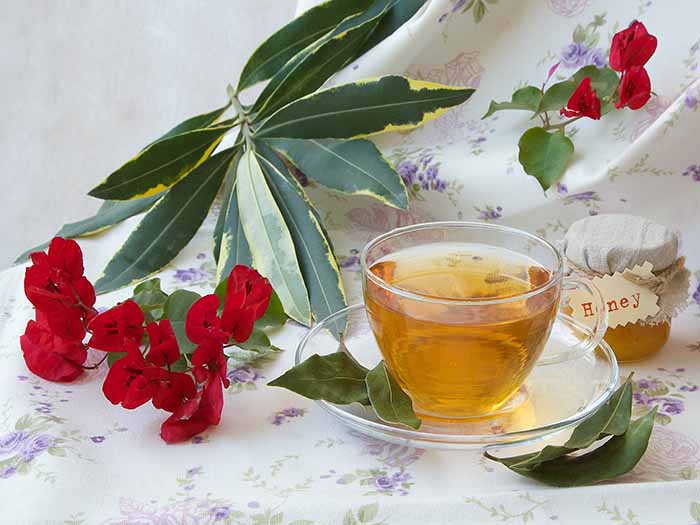Bay leaf tea is not only an aromatic and unique variety of tea but also possibly one that can provide a wealth of health benefits, thanks to its nutritional profile.
What is Bay Leaf Tea?
Bay leaf tea is a traditional beverage commonly brewed and consumed in India, although it is also popular in the Caribbean and other parts of the world. Bay leaves are popular herbs to include in recipes and culinary applications, but they can also be used to brew this powerful beverage. Bay leaves are the leaves of certain plants, including the bay laurel, scientifically known as Laurus nobilis. There are also variants of this plant from Indonesia, India, California, and Mexico. Bay leaves are extremely aromatic and potent when dried, and a single leaf in a stew or curry can provide a good amount of flavor. [1]
As a tea, the flavor is more subtle and subdued than when eaten, and it has a spicy quality that makes it quite popular. More importantly, however, it is both a preventative and tonic substance that can help with a variety of health conditions.
Bay Leaf Tea Benefits
Bay leaf tea, known to be packed with a healthy dose of vitamin C, A, calcium, and magnesium, has beneficial effects on the nervous and immune systems, inflammations, anxiety, and obesity.

Bay leaf contains enzymes that help to break down proteins. Photo Credit: Shutterstock
May Improve The Functioning Of Nervous System
Numerous studies have found that bay leaves can have an effect on the central nervous system, possibly including soothing nervous disorders and ensuring that communication occurs smoothly around the body. [2]
May Improve Skin Health
When topically rubbed on the skin, bay leaves are known to have healing properties, and the same is true when these leaves are brewed into a tea. The antioxidants can help to soothe the appearance of wrinkles, age spots, and blemishes, and even add elasticity to the skin. [3]
May Improve Heart Health
With good amounts of vitamin C and vitamin A in this tea, drinking a cup of this regularly can help to reduce blood pressure and even drop cholesterol levels, while maintaining the integrity of your blood vessels and arteries. [4]
May Aid in Managing Diabetes
Bay leaves have a well-known effect on blood sugar control within the body. A study published in the Journal of Clinical Biochemistry and Nutrition suggests that consuming bay leaves in doses of 1-3 g/day for a period of thirty days can help decrease risk factors for diabetes. A cup of tea is a great way to get bay leaf into your diet. In vitro studies have also observed improved glucose function. [5]
May Relieve Inflammatory Conditions
There are many inflammatory conditions that this tea is known to remedy, including things like bunions and the pain of arthritis, as well as a headache, gout, and other chronic problems with inflamed joints. [6]
May Help Soothe Stress and Anxiety
The central nervous system responds to this tea, which can help to alter your stress levels. There is a soothing quality to this slightly spicy brew, able to keep your stress hormone levels down and under control. [7]
Potential Antioxidant Properties
Some of the antioxidants in this tea are known to eliminate free radicals and relieve symptoms of gastric issues. [8]
May Aid in Digestion
There are certain enzymes found within bay leaves that speed the digestive process and help you get more nutrients from the food you eat.
May Help Soothe Respiratory Distress
The use of this tea to soothe coughs and sore throats is common in areas where it is widely cultivated.
How to Make Bay Leaf Tea?
Brewing your own bay leaf tea at home is very simple, although it will take a bit longer to brew than most herbal teas. Take a look at the recipe below.

West Indian Bay Leaf Tea Recipe
Ingredients
- 3 large West Indian bay leaves
- 3 cups of water
- 1.5-2 cups of milk (optional)
- 1-2 tsp honey/sugar (if desired)
Instructions
- To make bay leaf tea, add 3 large West Indian bay leaves to a saucepan of water (fresh leaves).
- Bring the water to a boil. Allow the tea to boil for 5 minutes, and then turn off the heat.
- Let the bay leaves steep for an additional 3 minutes.
- Strain out the bay leaves and serve the tea hot.
- If you're adding a natural sweetener or milk, do so in moderation, as the flavor is quite delicate.

Bay Leaf Tea Side Effects
There are a great many benefits of this tea, but there are some potential side effects, as well, such as complications with pregnancy, diabetes or the nervous system.
- Diabetes – The effects that this tea can have on blood sugar levels are well known, but this effect can also be hard to predict, so diabetic patients should drink this tea with caution.
- Nervous System – The relaxant nature of this tea on the nervous system can make it dangerous if you have issues with your central nervous system, or are planning to undergo any surgical procedures that may include anesthesia.
- Pregnancy – Pregnant and breastfeeding women are not recommended to drink this tea, due to its potent ingredients and potential effects.

